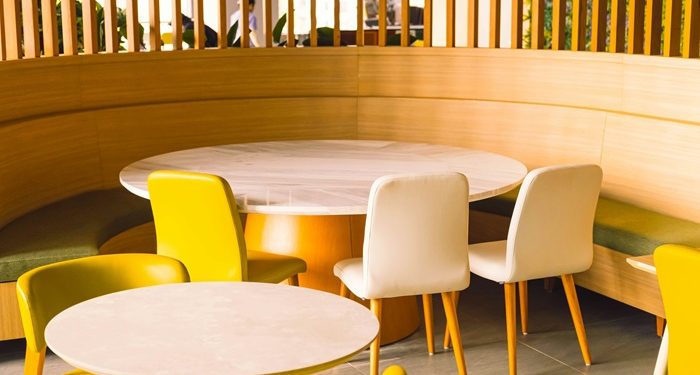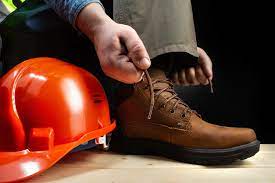Dining spaces are evolving into destinations where design is as memorable as the food. More than ever, chairs are being recognized as functional works of art, and restaurants are using them to transform interiors into experiences worth remembering. Sculptural seating has become a language of storytelling, a way for restaurants to convey their identity without a single word.
The demand for eye-catching interiors is not just a passing phase. Google Trends data has shown that interest in sculptural dining chairs has doubled during key peak periods, reflecting how both designers and customers are paying attention to furniture that makes a visual statement. Industry professionals have noted that the term “sculptural seating” is increasingly appearing in project briefs, suggesting that restaurant chairs are becoming a central element in restaurant branding. In today’s competitive dining scene, engaging diners’ emotions matters more than ever, and dramatic yet comfortable seating sets the right tone.
The Visual Power of Sculptural Chairs
A single chair can define the mood of a dining room. Bold silhouettes and exaggerated forms instantly capture attention, creating a focal point for interiors. These pieces work as conversation starters while also serving as functional furniture. Diners see them not just as seating but as part of the dining theater.
Photogenic chairs naturally drive free marketing. Guests often pose with sculptural furniture, turning it into a backdrop for photos shared across Instagram and TikTok. Studies have found that restaurants with these design features can experience a 30 percent increase in social visibility. The effect is even more substantial in venues where the chairs stand apart from conventional furniture, thereby raising the perceived level of sophistication and distinguishing the restaurant from its competitors.
Materials that Make the Statement
What makes a chair feel like a sculpture often comes down to the materials. Designers are blending contrasting surfaces such as brushed metals and plush velvets to create visual depth. Some choose molded plywood or bent steel to achieve sweeping, fluid shapes, while others prefer injection-molded plastics for striking modern curves.
Sustainability is another factor shaping choices. Woods certified by responsible forest management groups, recycled metals, and bio-based fabrics like mushroom leather are increasingly used in these pieces. Forward-thinking makers are even developing modular designs that extend the life of furniture and reduce waste. As technology evolves, tools like CNC machining and 3D printing enable chairs to take on shapes that were once impossible to produce.
Sculptural Chairs as Brand Identity
Restaurant owners have discovered that seating can visually convey brand personality in subtle yet powerful ways. A wellness café might feature chairs with organic lines that echo its focus on natural living, while a fine dining venue in the city may opt for geometric forms that suggest elegance and structure.
Distinctive chairs often become brand markers in their own right. Guests usually associate a memorable seat with the dining experience at a particular establishment. When furniture, lighting, and décor align in a cohesive narrative, the impression is even stronger. Data show that customers are more likely to return to restaurants with unique interior aesthetics, with some studies indicating a 20 percent increase in repeat visits.
Comfort Meets Creativity
There is a common assumption that artistic furniture cannot also be comfortable, yet modern design is proving the opposite. Ergonomic features, such as curved backrests and subtle lumbar support, are now seamlessly integrated into sculptural forms without compromising beauty.
Continuous-flow designs that support the body while remaining strikingly artistic are increasingly popular. Restaurants report that guests often stay longer when seated in chairs that strike a balance between comfort and artistry. This longer dwell time usually translates into higher revenue. Many sculptural chairs also use high-density foam cushions wrapped in performance fabrics, ensuring they withstand heavy use while maintaining a sense of luxury.
The Social Media Effect
Restaurants today are built with digital visibility in mind, and seating has taken on a new role in that strategy. Sculptural chairs often appear in the background of photos and videos that guests share, amplifying the restaurant’s reach without additional marketing costs.
Research indicates that visually distinctive interiors can lead to a 25% increase in online engagement and foot traffic. Beyond numbers, sculptural seating makes guests linger longer, enjoying not only the food but the entire setting. Interior designers are now factoring in how well a chair will photograph, treating seating as part of the restaurant’s social media plan.
Global Inspirations and Design Influences
The sculptural seating trend is not confined to one region. Across Europe, Italian designers are bringing elegance with curved silhouettes, while Scandinavian studios emphasize simplicity through minimal yet striking forms. In the Middle East, chairs are being designed as playful blends of function and whimsy, creating pieces that look as though they belong in art galleries as much as dining spaces.
Asian influences bring organic shapes inspired by nature, while Latin American and African traditions celebrate artisanal textures and cultural patterns. A recent design showcase featured Middle Eastern sculptural seating that blurred the line between art and utility, reinforcing the global scope of this movement. As restaurants adapt these ideas locally, the cross-pollination of cultures results in dining spaces that feel both international and deeply personal.
Investment Value of Bold Seating
While statement chairs come with higher upfront costs, the long-term return on investment makes them a worthwhile investment. They attract customers, encourage more extended stays, and can significantly enhance a brand’s reputation. In practical terms, this often results in higher sales and stronger customer loyalty.
Durability is another factor in their value. Many sculptural chairs are designed to last, often featuring replaceable cushions or modular components that minimize the need for complete replacements. Studies of hospitality interiors suggest that incorporating bold design elements, particularly furniture, can increase sales by up to 20 percent. Viewed this way, investment in sculptural seating becomes part of a restaurant’s growth strategy, not just a design choice.
Future Directions in Sculptural Seating
Innovation is pushing the boundaries of what these chairs can be. Designers are beginning to integrate features like wireless charging, subtle lighting, and interactive shapes into seating. AI-assisted tools are enabling the creation of highly customized designs that accurately reflect a restaurant’s unique vision.
Sustainability remains a driving force. Expect more use of recyclable composites and responsibly sourced woods. Flexible and modular seating solutions are also gaining traction, offering restaurants the ability to rearrange layouts for events or seasonal needs. These future directions suggest that sculptural seating will become even more practical while remaining artistically bold.
Final Frame: Dining as Sculptural Storytelling
Restaurant seating is no longer just about filling a room with chairs. It is about telling a story through design, creating an atmosphere that lingers in memory long after the meal is over. Sculptural chairs bring personality, charm, and artistry into the dining experience, elevating the ordinary into the extraordinary.
For restaurant owners, investing in statement seating is about more than aesthetics. It is a way of shaping how customers feel, remember, and talk about their visit. The art of seating is fast becoming central to hospitality, showing that the future of dining is as much about the environment as it is about the menu. Every chair now has the potential to be a story in itself, one that turns a simple meal into an unforgettable experience.












































































